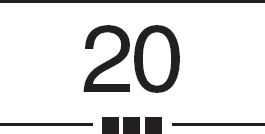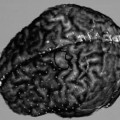
Image-Guided Cervical Instrumentation
The surgical treatment of cervical spine disorders is a demanding art. This is particularly so when decompression and stabilization of the craniocervical junction, upper cervical spine, or thoracocervical junction is required. Frequently the operative field provides only a limited interface between the surgeon and complex regional anatomy. The degree of difficulty is often compounded by congenital anomalies or destructive pathological processes causing distortion of the anatomic relationships.1
Traditionally surgeons have had to rely on the ability to assimilate information gained from preoperative imaging with their anatomic knowledge and surgical experience, supplemented with intraoperative fluoroscopy, to determine the extent of decompression and placement of instrumentation in the cervical spine. Operative techniques developed to guide the insertion of instrumentation into cervical vertebrae are often based on cadaveric anatomic studies with limited numbers2 and may not be appropriate for each individual case. This applies particularly to C1–C2 anatomy, which varies so significantly between patients that it precludes establishing absolute parameters for transarticular screw placement.3 The incidence of vertebral artery injury from this procedure is greater than 4%.4
Frameless stereotaxy was initially applied to intracranial surgery,5 and the technology has been adapted to assist spinal surgery.6 As an adjunct to cervical spine surgery, use of image guidance has now been reported in transoral odontoid resection,7 atlantoaxial fusion with C1–C2 transarticular screws,8 occipitocervical fusion,9 posterior cervical fusion with lateral mass plates,9 anterior cervical decompression,10 and cervical pedicle screw insertion.11
Due to the factors already discussed (limited surgical exposure, complex regional anatomy, and distortion of relational anatomy) image-guidance technology lends itself extremely well as an adjunct to cervical spine instrumentation. The surgeon is provided with a three-dimensional (3-D) anatomical correlation between the operative field and imaging data to guide surgical maneuvers, producing greater accuracy and consistency when placing instrumentation.8 The inherent inaccuracies with the intracranial application of frameless stereotaxy due to “brain shift” and surface fiducial markers do not apply in spinal surgery.12 The bony anatomy of the vertebrae remains consistent from preoperative imaging to intraoperative registration and is distinctive enough to provide recognizable landmarks that can be used as fiducial points. Any “intersegmental shift” is overcome by sequential registration of each vertebra to be instrumented,12 with fluoroscopy used for cross checking alignment if required. Furthermore, the ability to universally calibrate a wide range of surgical instruments used in cervical spine surgery has expanded the benefits of image guidance beyond simply pointing with a probe to estimate trajectories.13 Decompression can be undertaken with calibrated upcutting rongeurs,14 or screwholes drilled through calibrated guide tubes with real-time image guidance.12
Some of the disadvantages of image-guided cervical surgery include the initial cost of the equipment,8 the time added to the overall length of the procedure by registration,15 increased imaging and therefore increased radiation dose to the patient,16 and potential inaccuracies associated with relying on preoperative imaging of a mobile structure.17 We believe that when image guidance is applied appropriately to cervical instrumentation procedures (see following text), most of these limitations can be answered. After the initial learning curve, intraoperative registration is a step that usually only takes 1 to 2 minutes per vertebra, time that is often recouped due to the surgeon’s increased confidence in the accurate placement of the instrumentation when using the system.9 For most of the cervical procedures in which we use the image-guidance system, patients require preoperative assessment with a fine-cut computed tomographic (CT) scan of the bony anatomy (and 3-D reconstructions) in addition to the imaging they presented with anyway, and therefore usually do not receive an increased radiation dose over and above that which our usual practice would entail.
A number of techniques are employed to overcome “motion inaccuracies.” Intraoperative motion between segments due to respiration is compensated for by “dynamic referencing,”12 a process whereby movement of the reference arc is tracked by the electro-optical camera at a frequency of 30 to 60 Hz, and the images on the workstation are constantly updated to compensate for the movement. As previously mentioned, “intersegmental shift” is overcome by sequential referencing of each vertebra as required. Instability at the site of the pathology can be negated by imaging the patient in a halo vest, which can be worn intraoperatively to maintain the same alignment. Alternatively intraoperative fluoroscopy can be employed to check alignment and confirm the relationship of two adjacent vertebrae (e.g., C1 and C2).
 Indications
Indications
Despite the reported use of image guidance as an adjunct to all major types of cervical instrumentation,7–11 we believe its main indications in cervical surgery are assisting the placement of C1–C2 transarticular screws, assisting the placement of pedicle screws, and guiding transoral decompression of the ventral cervicomedullary junction. If the image-guidance system is being employed to assist insertion of transarticular or pedicle screws, and the construct also requires lateral mass screws, we find it helpful in assisting their placement also, but we do not routinely use image guidance for lateral mass screws alone. Nor do we routinely use image guidance for anterior cervical decompression (discectomy, foraminotomy, corporectomy) and instrumentation (Table 20–1).
Definite indications | C1–C2 transarticular screw insertion (occipitocervical fusion, atlantoaxial fusion) Transoral decompression ventral craniocervical junction Cervicle pedicle screws |
Helpful | Lateral mass screws (including C1 lateral mass screws) C2 pars screws Tumor resections |





